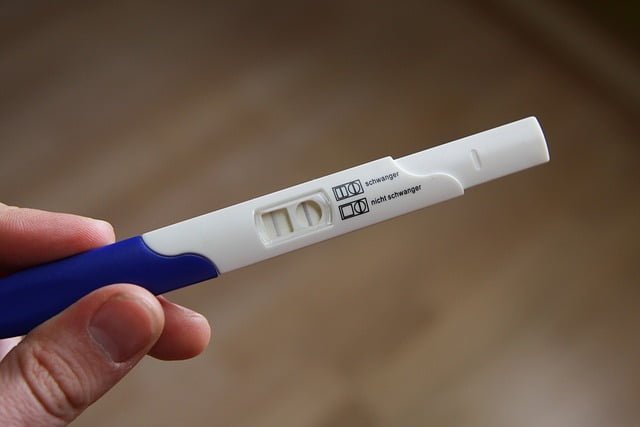As a woman trying to conceive, understanding your fertility window and the best time to have intercourse is crucial. One common question many women ask is: “Can I get pregnant 2 days after a positive ovulation test?” In this comprehensive guide, we’ll explore the answer to that question and dive into various aspects of ovulation, fertility, and conception.

Understanding Ovulation and Ovulation Tests
What is Ovulation?
Ovulation is the process in which a mature egg is released from the ovarian follicle, making it available for fertilization by sperm. It usually occurs around the midpoint of a woman’s menstrual cycle and is regulated by hormones such as estrogen, luteinizing hormone (LH), and progesterone.
What are Ovulation Tests?
Ovulation tests, also known as ovulation predictor kits (OPKs), are home-based urine tests that detect the presence of LH in a woman’s system. They work by identifying the surge in LH levels that typically precedes ovulation, helping women predict when they are most fertile.
The Fertile Window: Timing is Key
The fertile window refers to the period during a woman’s menstrual cycle when the chances of conception are the highest. This window usually spans 5 days before ovulation and the day of ovulation itself.
How Long Does an Egg Survive?
An egg can survive for 12-24 hours after being released from the ovary. This limited viability means that timing intercourse correctly is crucial for increasing the chances of conception.
Sperm Lifespan: A Longer Opportunity
Sperm can live inside a woman’s reproductive tract for up to 5 days. This longer lifespan means that having intercourse before ovulation can help ensure that sperm is present and ready to fertilize the egg once it is released.
Can I Get Pregnant 2 Days After a Positive Ovulation Test?
Now that we know the basics of ovulation and the fertile window, let’s address the main question: “Can I get pregnant 2 days after a positive ovulation test?”
A positive ovulation test indicates an LH surge, which means that ovulation is likely to occur within the next 12 to 36 hours. If you have intercourse 2 days after a positive ovulation test, you may still be within your fertile window, but your chances of conception will have started to decrease.
Here are some day-specific probabilities of conception based on the timing of intercourse:
- 3 days before ovulation: 27%
- 2 days before ovulation: 33%
- 1 day before ovulation: 41%
- Day of ovulation: 20%
- 1 day post ovulation: 8%
As you can see, the chances of conception are highest in the days leading up to ovulation and decrease significantly on the day of ovulation and afterward. Therefore, the optimal time for intercourse to maximize the chances of pregnancy is a few days before a positive ovulation test.
Using Ovulation Tests Effectively
When to Start Testing
If you have regular menstrual cycles and know when you typically ovulate, you can begin using ovulation tests about 5-6 days before your next expected ovulation date. If your cycles are irregular or you’re new to testing, it’s best to start testing soon after your period ends to ensure you don’t miss your LH surge.
Testing Frequency and Timing
LH levels usually surge in the blood between midnight and 8 am, so it’s a good idea to test your second morning urine after a 2-3 hour hold. Some women may need to test twice a day (noon and early evening) to make sure they don’t miss their LH surge, especially if they have short surges that only last a few hours.
Confirming Ovulation: Going Beyond Ovulation Tests
While ovulation tests are helpful for predicting ovulation, they don’t provide information about whether ovulation has actually occurred. Confirming ovulation can help ensure that you’re giving yourself the best possible chance at conception.
Methods to Confirm Ovulation
- Basal Body Temperature (BBT) Tracking: This involves monitoring your body’s lowest resting temperature before and after ovulation. A dip and subsequent rise in BBT can indicate that an egg has been released.
- Serum Progesterone Blood Tests: Progesterone is the hormone released after ovulation. Blood tests can detect serum progesterone levels to confirm ovulation. However, these levels can fluctuate throughout the day, so multiple tests may be needed for an accurate picture.
- Ultrasound: This imaging technique can detect corpus luteum formation and changes in the endometrial lining, confirming ovulation.
None of these methods, however, can confirm whether ovulation was successful. Successful ovulation refers to the release of an egg and the maintenance of adequate progesterone metabolite (PdG) levels long enough to support conception. Proov PdG tests are the first and only FDA-cleared PdG test kit that can confirm successful ovulation at home.

In Conclusion
While it is possible to get pregnant 2 days after a positive ovulation test, your chances of conception are higher if you have intercourse in the days leading up to ovulation. Regularly tracking your cycle and using ovulation tests to predict your fertile window can help increase your chances of getting pregnant. Additionally, confirming ovulation and ensuring that it was successful can provide valuable insights into your fertility journey.





